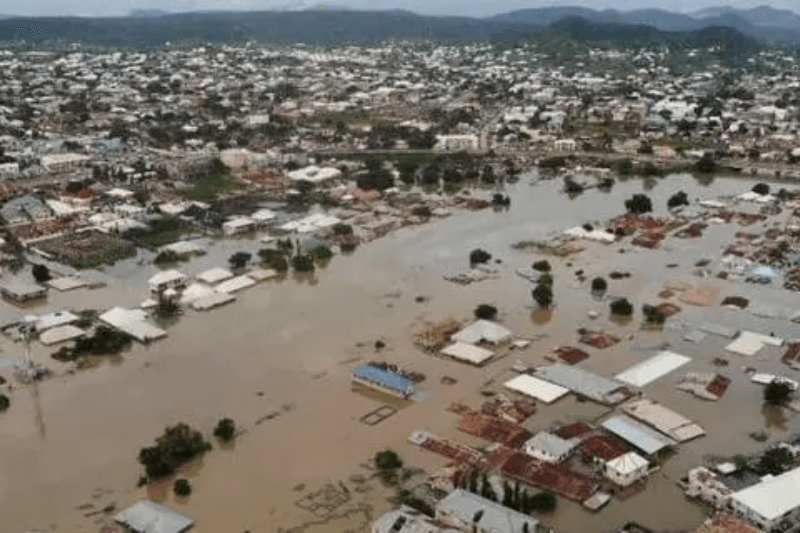Freak floods in northern Nigeria have left at least six people dead and more than 10,000 homeless since Monday. Eleven scattered villages around Adamawa State are the ones that have been affected in the floods.
State officials are already in worry of the early onset of flooding this year, while the peaks of the rains have not arrived. The resultant effects of the rains include a mass flooding of rivers, prominently the Benue, hence affecting infrastructure, farms, and towns.
“Due to the climate change and a lot of other factors, the floods have come earlier than we expected and it caught a lot of our people unawares,” said Kaletapwa Farauta, the Deputy Governor of Adamawa State. Normally, preparation starts when the flood is to be expected in September; however, events this year unfolded so early.
Even though the flood this year is not as bad as it had been in the past, the State government still appealed to people living in flood-prone areas along the Benue River to relocate to one of eight internal displacement camps established in collaboration with NEMA. All these measures will go a long way to averting any further loss of property and lives.
Keep Reading
The 2022 flooding in Nigeria remains fresh, with at least 600,000 hectares of farmland claimed, more than 600,000 people displaced, and over 600,000 deaths recorded that year. It is named the worst flood the nation has seen in almost ten years. This underlies the base for early evacuation and preparedness should this year’s floods come in early.
But the continuous change in the weather patterns has made adaptation to this situation unpredictable and hazardous now for flood-prone communities like Adamawa State.

